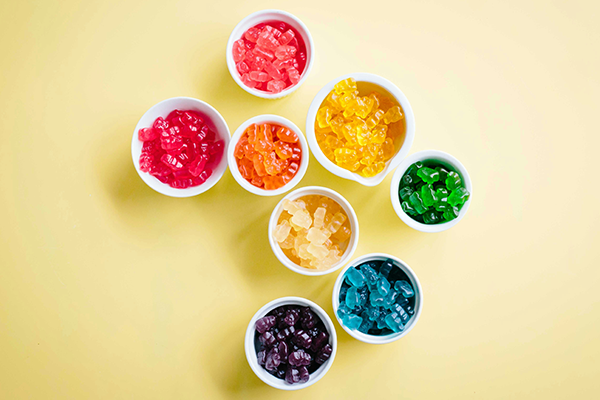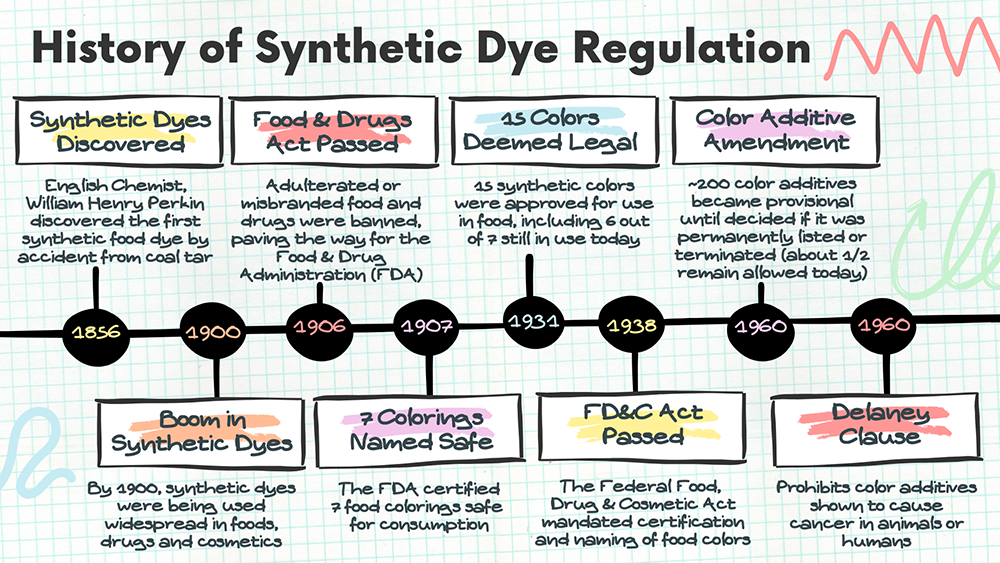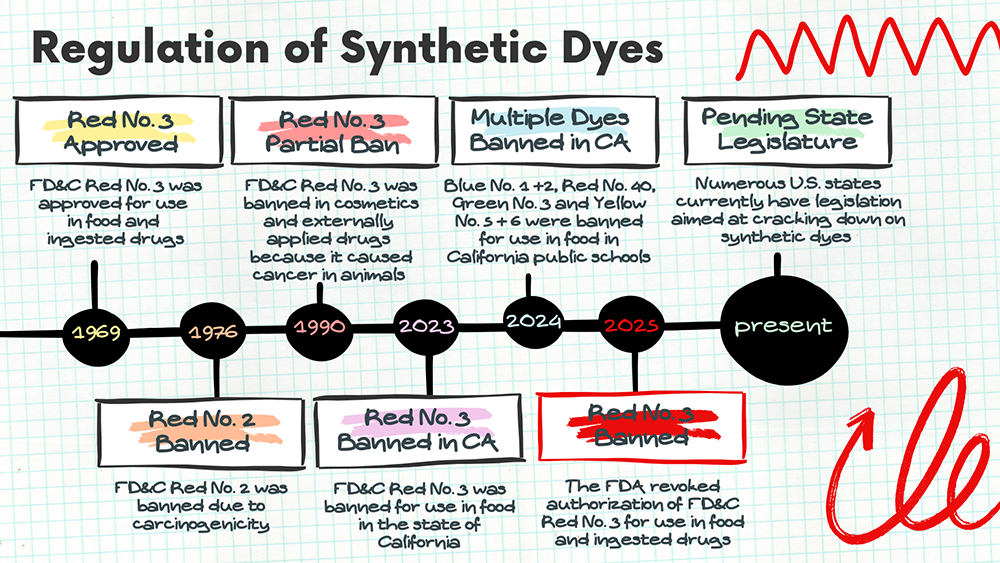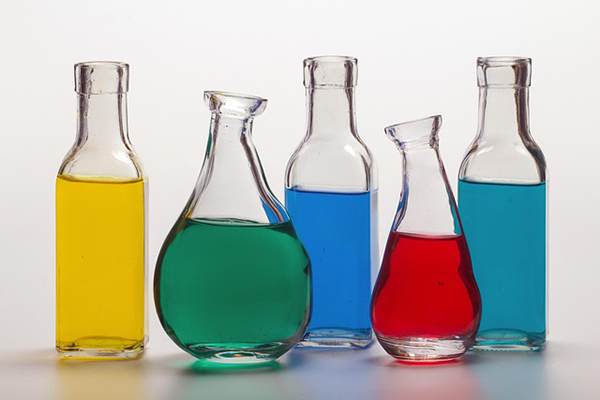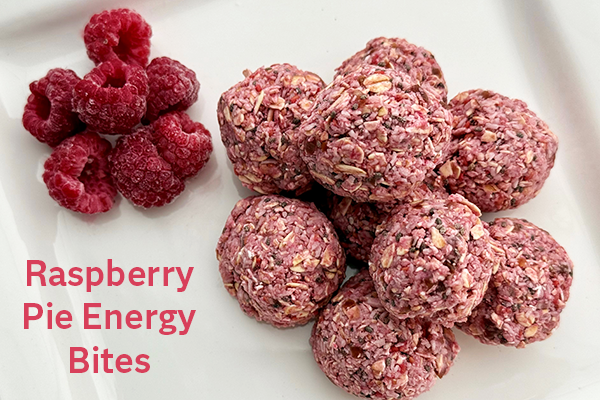Many popular products from brightly colored candies and cereals to neon pickles to vibrant drinks get their eye-catching appeal from synthetic food dyes. But beneath their dazzling hues lies a complex, controversial web of science, regulation and risk. So, let’s explore the history of synthetic food dyes and uncover potential risks behind the rainbow.
What are Synthetic Food Dyes?
Born by accident in 1856 from coal tar chemicals, synthetic food dyes are colorants that do not exist in nature and are added to food to make them irresistibly colorful. Over time, their manufacturing has evolved, with most of today’s food dyes made from petroleum.
Since their discovery, the use of synthetic food dyes has been on the rise. According to a 2025 Wall Street Journal article, more than 1 in 10 food and beverage products in the U.S. contain at least 1 artificial dye, with more than 40% of items including 3 or more.
And while synthetic dyes dominate colorful cereals and candies, they also sneak their way into unsuspecting products like meats, applesauce, dried fruit, seasoning blends, white frosting or even marshmallows. Not to mention medications and soap!
We're dyeing to know - what risks are lurking behind the rainbow of synthetic dyes? Find out + tips for going #dyefree. #saslife Click To TweetRegulatory History of Synthetic Dyes
After the boom in synthetic dyes in the late 1800s, the U.S. government began to take steps to regulate the use of these ingredients, paving the way for the creation of the U.S. Food and Drug Administration (FDA) in 1906.
Since its inception, the FDA has been working to prevent the sale of adulterated or misbranded food and drugs. Over the years, numerous synthetic dyes have been created, but only eight are currently certified for use: FD&C Blue No. 1, FD&C Blue No. 2, FD&C Green No. 3, Orange B, Citrus Red No. 2, FD&C Yellow No. 5, FD&C Yellow No. 6, and FD&C Red No. 40 (with a recent ban of FD&C Red No. 3 – more on this below).
It’s important to note that certification of synthetic dyes is not universally applied. A dye may be approved by one regulatory agency (like the FDA) and not approved by another agency (like the European Food Safety Authority) – or a warning label may be required on products that contain the dye.
Potential Risks Behind the Rainbow
Among the long-debated health risks of synthetic food dyes – including allergic reactions, behavioral problems, and cancer – concerns regarding their effects on children’s behavioral health have been the most prominent.
A 2021 study by California’s OEHHA found that synthetic food dyes can cause hyperactivity or other neurobehavioral problems in some children, with varying sensitivity levels. Similarly, a 2024 review revealed a direct link between color additives and a range of health issues, including behavioral changes in children with and without diagnosed disorders.
Because of newer studies like these and the advocacy of organizations such as the Center for Science in the Public Interest (CSPI), legislators and government agencies are reexamining the safety of synthetic food dyes, paving the way for policy change and consumer protection.
A Closer Look at Certified Color Additives
Much of the current regulation regarding synthetic food dyes is based on research done decades ago. While insightful at the time, science has come a long way in the last 50 years and so has our understanding of the health impacts of these ingredients.
FD&C Red No. 3 is a prime example. Red No. 3, also known as erythrosine, has been a staple in processed foods, candies and medications since the late 1960s. Despite its fiery appeal, concerns surrounding the safety of Red No. 3 began in the 1980s, with research suggesting a link to cancer in lab rats. These findings led the FDA to ban Red No. 3 from cosmetics and externally applied drugs in 1990 – but not from food or ingested drugs. Interesting, right?
Fast-forward to current day, and the FDA has now revoked authorization for the use of Red No. 3 in food and ingested drugs in response to a 2022 petition showing cancer in lab rats exposed to high levels of the dye. Prior to this change, the state of California had already banned its use in food, along with several other synthetic food dyes served in food in public schools.
Manufacturers using Red No. 3 in food and ingested drugs have until Jan. 2027 or Jan. 2028, respectively, to reformulate their products – so it’s not going to be an overnight change.
Dye-free Alternatives
Despite federal regulations, consumers are making a push for foods with natural ingredients. And luckily, many brands are listening, taking steps to remove synthetic food dyes in favor of more natural options. The colors may not be as vibrant as you’re used to, but they’ll still dazzle your taste buds! Synthetic dyes don’t impact flavor after all.
If you’re looking to go dye-free (or dye-less), start small – experiment with natural alternatives to your family’s color-laden favorites and explore dye-free products. Here are some tips for reducing dyes:
- Read labels carefully: Synthetic dyes must be listed by name on ingredient lists, but there is some flexibility in how they are listed. For example, Blue 1 may appear as FD&C Blue 1, Blue #1 or Blue No. 1. Understanding these variations can help you spot hidden dyes more effectively.
- Go natural: Gradually start finding or making natural alternatives. Keep a running list of dye-free foods and brands that your family enjoys, but periodically double-check labels for any formulation changes. Join a dye-free Facebook group in your area or check out this list of dye-free snacks to get you going.
- Choose whole foods: Foods straight from, or close to, nature are naturally dye-free, so limiting processed foods will automatically reduce your intake of synthetic dyes. Plus, they’re packed with health-boosting nutrients!
- Buy organic when possible: Organic foods cannot contain artificial colors, so anything certified organic is a safe bet. They may still use coloring agents, but it will be from natural sources.
What does this all mean?
In a world where we often eat first with our eyes, synthetic food dyes have played a pivotal role in shaping modern food manufacturing. However, as science and awareness continue to evolve, so does our understanding of their potential impact on health.
For some people, eliminating synthetic dyes can be life-changing, while for others, it may not lead to noticeable changes. Exploring dye-free alternatives is a simple way to make healthier choices, especially if hyperactivity, behavioral issues, or allergic reactions are a concern for you or your family members.
Do synthetic dyes make food more fun and appealing? Yes. Do we need synthetic dyes? No. Can food be just as eye-appealing with natural alternatives? YES!
For more information, check out To Dye For: The Documentary.
Raspberry Pie Energy Bites
Makes 30 bites
Recipe adapted from: The Cooking Collective
PRINT RECIPE
These perfectly pink energy bites are naturally colored with frozen raspberries. No dyes here!
Ingredients
1 ½ cups rolled oats
1 ½ cups desiccated coconut
1 ⅓ cups raspberries, fresh or frozen
12 pitted dates
1 tsp vanilla extract
2 Tbsp chia seeds
pinch of salt
Directions
- Place all ingredients in a food processor. If using frozen raspberries, you do not need to thaw them first.
- Blend until the mixture breaks down and starts to stick together. It should hold together when squeezed/pressed into your hand. If the mixture is a little dry and not entirely sticking together, you can add a teaspoon of water.
- Roll the mixture into bite-sized balls.
- Store in the fridge for up to a week or freeze for up to 3 months.
